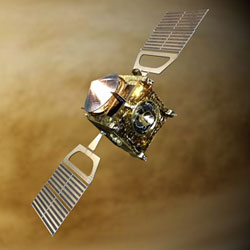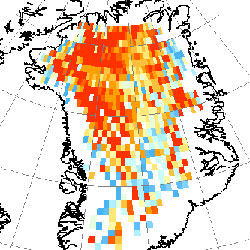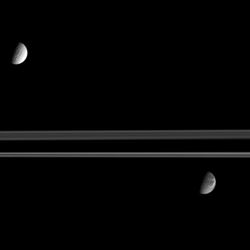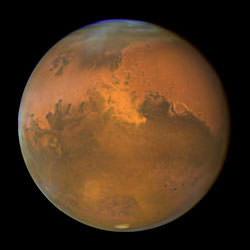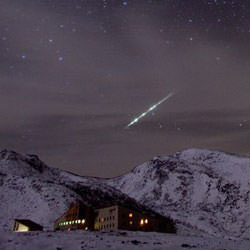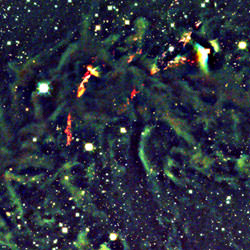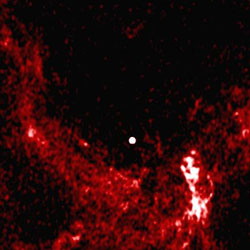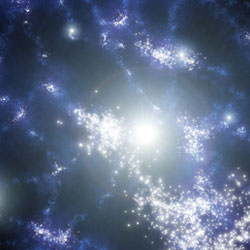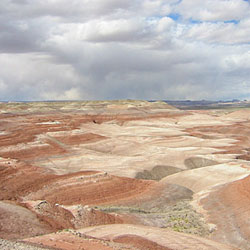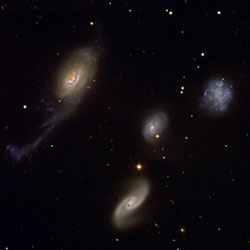
Robert’s Quartet. Image credit: ESO. Click to enlarge.
ESO PR Photo 34a/05 shows in amazing details a group of galaxies known as Robert’s Quartet [1]. The image is based on data collected with the FORS2 multi-mode instrument on ESO’s Very Large Telescope.
Robert’s Quartet is a family of four very different galaxies, located at a distance of about 160 million light-years, close to the centre of the southern constellation of the Phoenix. Its members are NGC 87, NGC 88, NGC 89 and NGC 92, discovered by John Herschel in the 1830s. NGC 87 (upper right) is an irregular galaxy similar to the satellites of our Milky Way, the Magellanic Clouds. NGC 88 (centre) is a spiral galaxy with an external diffuse envelope, most probably composed of gas. NGC 89 (lower middle) is another spiral galaxy with two large spiral arms. The largest member of the system, NGC 92 (left), is a spiral Sa galaxy with an unusual appearance. One of its arms, about 100,000 light-years long, has been distorted by interactions and contains a large quantity of dust.
The quartet is one of the finest examples of compact groups of galaxies. Because such groups contain four to eight galaxies in a very small region, they are excellent laboratories for the study of galaxy interactions and their effects, in particular on the formation of stars.
Using another set of VLT data also obtained with FORS2, astronomers [2] were able to study the properties of regions of active star formation (“HII regions” [3]) in the sister members of Robert’s Quartet. They found more than 200 of such regions in NGC 92, with a size between 500 and 1,500 light-years. For NGC 87, they detected 56 HII regions, while the two other galaxies appear to have far fewer of them. For NGC 88, however, they found two plume-like features, while NGC 89 presents a ring of enhanced stellar activity. The system is thus clearly showing increased star formation activity, most probably as the result of the interaction between its members. The sisters clearly belong to a perturbed family.
The quartet has a total visual magnitude of almost 13, i.e. it is about 600 times fainter than the faintest object that can be seen with the unaided eye. The brightest member of the group has a magnitude of about 14. On the sky, the four galaxies are all within a circle of radius of 1.6 arcmin, corresponding to about 75,000 light-years.
Notes
[1]: The group of galaxies was known as a Compact Group since 1977 by J.A. Rose, under the designation Rose 34. Robert’s Quartet is also known under the less poetic name of AM 0018-485 from the Catalogue of Southern Peculiar Galaxies and Associations, compiled in 1987 by astronomers Halton “Chip” Arp and Barry Madore. But who is Robert then? As discovered by Australian amateur astronomer Mike Kerr, Arp and Madore named Robert’s Quartet after Robert Freedman who generated many of the updated positions of galaxies in the catalogue. The astronomers clearly had a very good sense of humour as the catalogue also contains a system of galaxies called Wendy (ESO 147- 8; for Wendy Freedman) and another called the Conjugal galaxy (ESO 384- 53)!
[2]: The astronomers are S. Temporin (University of Innsbruck, Austria), S. Ciroi and P. Rafanelli (University of Padova, Italy), A. Iovino (INAF-Brera Astronomical Observatory, Italy), E. Pompei (ESO), and M. Radovich (INAF-Capodimonte Astronomical Observatory, Italy). (The article describing this result is available in PDF format at http://www.ast.cam.ac.uk/%7Esb2004/posters/files/Temporin.pdf)
[3]: The radiation of young hot stars embedded in an interstellar cloud is able to heat the surrounding gas, resulting in the apparition of an emission nebula that shines mostly in the light of ionized hydrogen (H) atoms. Such nebulae are therefore often referred to as “HII regions”. The well-known Orion Nebula is an outstanding example of that type of nebula.
Original Source: ESO News Release

